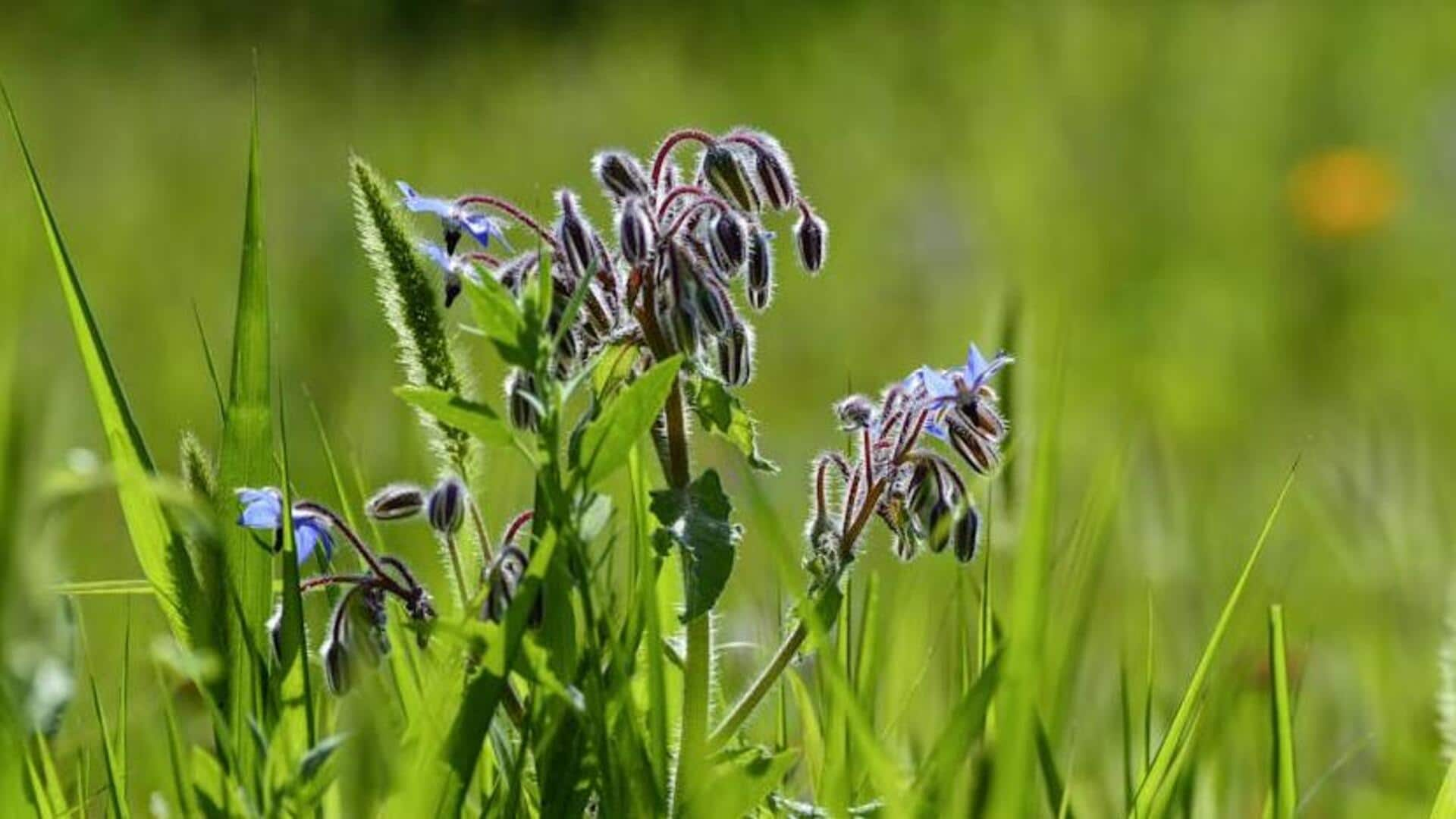
Growing hardy borage for edible flowers at home
What's the story
Borage, or starflower, is a hardy annual plant prized for its beautiful blue blooms and refreshing cucumber-like flavor. Easy and beneficial to grow in your garden, it not only attracts pollinators but also provides edible flowers, perfect for adding a touch of elegance to any meal. Our comprehensive guide will help you master the art of growing borage in your garden, from seed selection to harvest.
Location and soil
Choosing the right spot and soil
Borage loves sun and well-drained soil. Select a location in your garden that gets a minimum of six hours of direct sunlight each day. While borage can adapt to different soil conditions, it likes slightly acidic to neutral soil, with a pH ranging from six to seven. Before planting, it's a good idea to enrich your soil with compost. It improves drainage and adds nutrients.
Seed sowing
Planting borage seeds
Directly sow borage seeds into the garden after the last frost date in your area. Plant seeds approximately one-fourth inch deep and space them at least 12 inches apart, as borage plants can become quite large. Water gently but thoroughly after planting. Seeds typically germinate within five to ten days with consistent moisture.
Maintenance
Caring for your borage plants
Once established, borage is a low-maintenance plant that only needs regular watering. Keep the soil moist but not waterlogged by giving it about an inch of water per week, either from rainfall or by watering it yourself. While mature borage can handle some drought, it's happier with steady moisture during dry periods.
Harvest time
Harvesting edible flowers and leaves
Borage flowers should be harvested in the morning when their flavor is at its peak. Simply pluck the beautiful blue flowers just before you intend to use them, this way they remain fresh. Young leaves can also be collected during the growing season. Beware, they get pricklier as they age. By doing so, you can easily add both beauty and interesting flavors to your dishes.